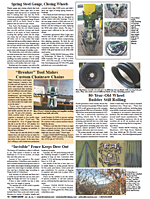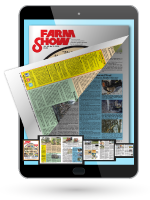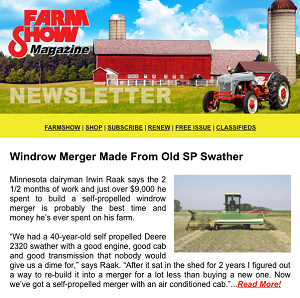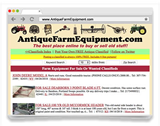1995 - Volume #19, Issue #2, Page #09
[ Sample Stories From This Issue | List of All Stories In This Issue | Print this story
| Read this issue]
Verstaile Self-Propelled Sprayer Made From Old Combine
 |
So last year the Durners built a self-propelled sprayer out of a mid-1970's Inter-national combine. It's packed with more versatility than any commercial rig they ever tried.
"We sprayed about 3,000 acres, mostly wheat stubble, with it last season and nearly all the systems we built into it worked perfectly," says Raymond Durner of Bartley, Neb.
The Durners bought an 815 combine for $3,500 and stripped it down to the frame. They reinforced the frame with heavy angle iron.
They reversed direction of the combine, turning everything around including the cab, which mounts on Deere cab mounts. Likewise, they pulled the engine off the top of the combine and mounted it sideways on the frame behind the cab.
The men widened the sprayer's front adjustable axle to 120 in. to match their 30 in. rows. They did so by welding pieces of another 815 axle onto the axle, which originally adjusted to only 96 in. wide.
The sprayer's front tires are 13.6 by 26 in. and came off an old Deere combine. Rear tires are 20.8 by 38 in. off a 7150 IH tractor. They're bigger than the original combine tires. "We wanted to increase road speed up to 16 or 17 mph from 12 or 13 mph and to improve handling," Durner explains. "It steers perfectly on the road, just like a pickup."
The combine's original hydraulics drive all systems on the sprayer except for the Hi Pro spray pump. That runs off the combine's hydraulic reel drive to permit variable pump speed instead of having to run it at only one speed as with most commercial rigs.
Five-section shop-built booms have a stationary 12-ft. wide center section with two 10 ft. hydraulically folding wings on each side. Each section has separate shut offs. Nozzles have 3-way selectors to permit applying 10, 15 or 30 gpa.
A Raven 750 monitor system controls application rates.
The sprayer has three tanks. The main tank, for applying herbicides or liquid N, is a rear-mounted 750-gal. Tyler Patriot tank. A 16-gal. and 8-gal. tank mount on the right side of the sprayer to hold chemicals that the Durners can direct inject into the boom for treating specific weeds in small areas of the field. The injection system is off-the-shelf.
The sprayer is fitted with a Smucker foam marker system, a fresh water boom flush-out system with 75-gal. water tank, and a rear-mounted 10-gal. tank that holds fresh water to wash hands.
Altogether, the sprayer cost the Durners about $16,000 to build.
There are still a couple of minor bugs to work out of the sprayer, they say.
They plan to put gauge wheels on the inside 10-ft. boom sections to stop bounce on rough terrain. And they plan to to turn the radiator shroud backward so not as much chemical gets pulled into it.
Contact: FARM SHOW Followup, Larry Durner, HC 68, Bartley, Neb. 69020 (ph 308 692-4230).

Click here to download page story appeared in.

Click here to read entire issue
To read the rest of this story, download this issue below or click here to register with your account number.




